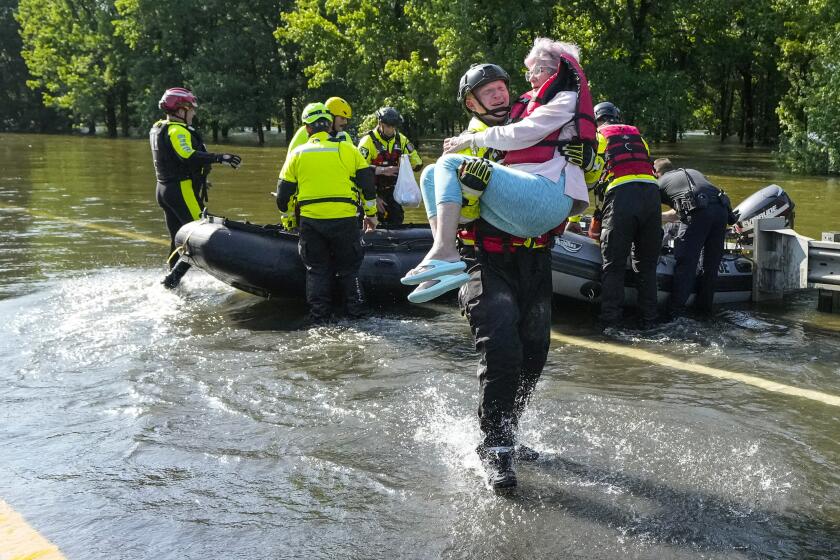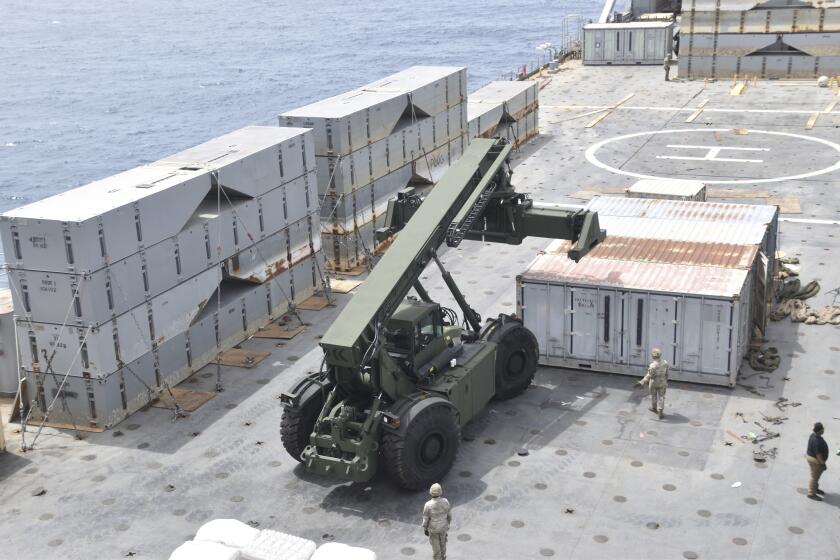Exxon Valdez to Sail Under a New Name When It Returns to Service
Exxon Shipping Co. officials announced Friday that the Exxon Valdez, the tanker that caused the worst oil spill in the nation’s history, will return to service in mid-August with a new name and a new route outside U.S. waters.
The 987-foot tanker, rechristened the Exxon Mediterranean, has not been retrofitted with a double bottom, which the U.S. Coast Guard said would have greatly lessened the impact of the March, 1989, spill.
The tanker’s route was changed not for public relations reasons, but because of the declining need to transport Alaskan crude oil, Exxon Shipping Co. President Gus Elmer said at a press conference not far from the San Diego shipyard where about $30 million in repairs are being completed. The tanker will load Middle Eastern oil in the Mediterranean and deliver it to Europe, becoming the first U.S.-licensed tanker to enter foreign service, officials said.
“We’re going to go forward from here,” Elmer said.
In March, 1989, the Valdez ran aground on Alaska’s Bligh Reef, tearing open its hull and spilling 11 million gallons of sticky crude oil into Prince William Sound. It was towed into San Diego Bay in July, 1989, to undergo repairs at National Steel & Shipbuilding Co. where it was built in 1986.
The Coast Guard has concluded that if the Valdez had been equipped with a double bottom, as much as 60% of the oil would not have spilled into the water. But Elmer said Friday that while it would have been technically feasible to retrofit the Valdez, Exxon opted to have it “returned to its original construction.”
Elmer said Exxon is awaiting the results of a National Academy of Science study, commissioned by the Coast Guard, that is considering how double hulls and double bottoms increase the safety of tankers. Exxon plans to follow that study’s recommendations when it builds new tankers in the future, Elmer said, but will probably not retrofit its existing fleet to meet any stricter guidelines.
“Retrofitting really is not an (economically) viable alternative,” he said. “What you’re doing is really building a new ship. You’re talking about replacing 80% of the ship and having the vessel out of service for a long, long time.”
In response to repeated questions, Elmer denied that Exxon had renamed and reassigned the Valdez to improve the company’s public image.
“Going foreign was purely an economic matter,” he said. “And the renaming is consistent with our policy that we try to name the ships as best we can after their principal area of service.”
He pledged, however, that the craft will “remain American.”
“The Exxon Mediterranean will be U.S.-flagged. She’ll have a U.S. crew. She will be U.S.-owned and she will be managed by my organization and will therefore be U.S.-managed,” Elmer said.
Elmer said that the Valdez and its sister ship, the Exxon Long Beach, were designed to travel from Alaska to Panama. Now Exxon delivers no oil to Panama and brings Alaskan oil exclusively to the U.S. West Coast, where only two ports--Los Angeles and San Francisco--can accommodate a tanker as large as the Valdez. Even there, he said, the tankers must be partially empty, or “light-loaded,” to enter the ports.
When combined with the decreasing supply of Alaskan oil, Elmer said, those shorter West Coast voyages likely would have prompted Exxon to change the Valdez’s route even if the spill had been avoided.
“There’s no question that had we not had the accident, at this point in time we would be sitting on surplus capacity . . . on the West Coast,” he said, adding that if the future sees further declines in supply as expected, Exxon could consider reassigning the Exxon Long Beach or another of the seven tankers that serve the Western seaboard as well.
Elmer said he and his colleagues “obviously don’t subscribe to the bad luck theory” held by some mariners, who believe it is foolhardy to change a ship’s name. When the Exxon Garden State moved from New Jersey to Louisiana, for example, it was renamed the Exxon Bayou State, he said.
Kelly Quirke, a spokesman for Greenpeace, which has been active in decrying the Valdez disaster, called Friday’s announcements “a P.R. move, absolutely.”
“If the Exxon Valdez hadn’t run aground last year we certainly wouldn’t be seeing them moving it to the Mediterranean right now. And you wouldn’t see them renaming it,” Quirke said. “Exxon feels that the best way for the Exxon Valdez to avoid Bligh Reef is to move the Valdez to a different ocean.”
More to Read
Start your day right
Sign up for Essential California for news, features and recommendations from the L.A. Times and beyond in your inbox six days a week.
You may occasionally receive promotional content from the Los Angeles Times.






